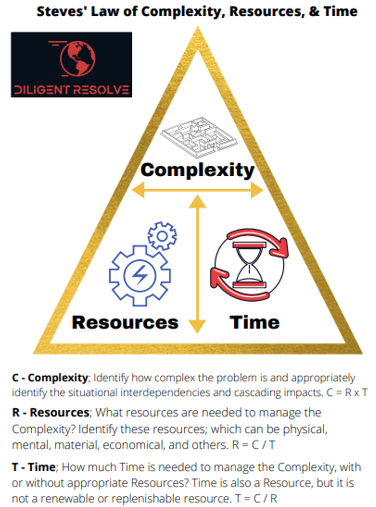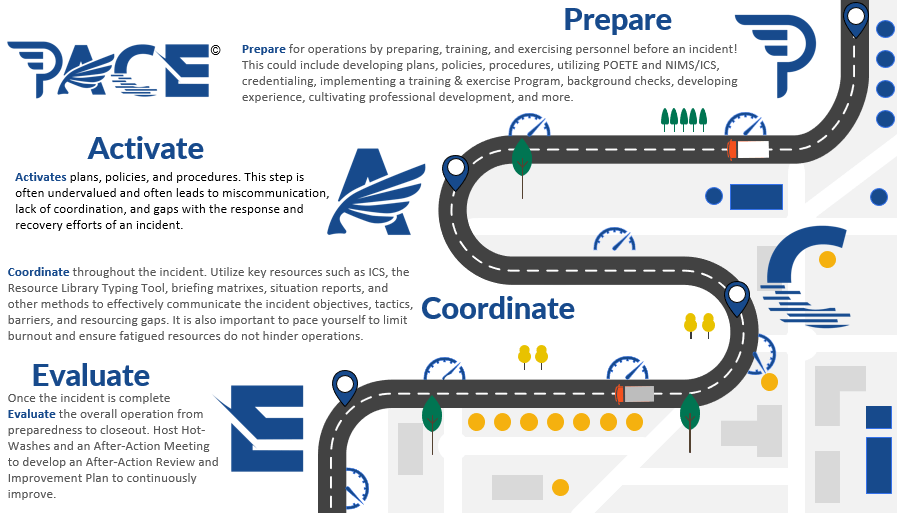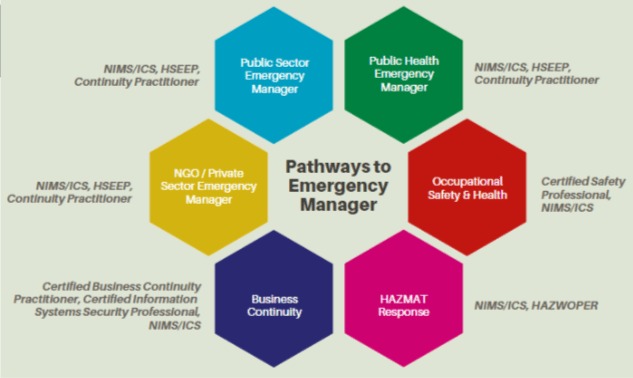Steves' Law of Complexity, Resources, & Time
- By Zane Steves
- •
- 25 Jul, 2021
Resource management is right there with communication as a top area for improvement at the conclusion of almost all exercises and incidents, but why? We practice the Incident Command System (ICS), utilize a dedicated Logistics Section, are knowledgeable experts in the field, and the list continues. The obvious answer is that the process of identifying resources to implement tactics is complicated. Many times Operations understands what they need; but they do not always understand the interdependencies those resources may have on time and complexity. This is because complexity is directly impacted by the resource allocation process and the time it takes to achieve the objective or get the needed resources. A prime example, if I order a Type I resource for the next operational period in the Tactics Meeting, does Logistics know if that resource is ready to go? Does that resource have a lead time? Do they have required maintenance? Are there agreements or contracts needed? Is there other support required to make the ordered resource fully operational? These are the questions that often get missed during the Tactics Meeting. Logistics may say that it is delayed, not possible, or another barrier to obtaining the resource came up later in the planning process. This relies on communication and coordination working across multiple parts of the operation. Since resource management and communications are two of the largest failure points for mission success, it seems unwise to delay the conversation or spread it out into various touch points.
When conducting the Tactics Meeting, the Operations Section Chief, Resources Unit Leader, Logistics Section Chief, Safety Officer, and possibly the Incident Commander are all in attendance, right? In a perfect ICS scenario, yes. In the real world that application varies immensely. In some cases Operations has already developed the Operational Planning Worksheet (ICS-215) and the Assignment Lists (ICS-204s) with basic information. Thus the Tactics Meeting becomes a nod of agreement versus the collaborative, communicative, and coordinated discussion that it is intended to be. Having this discussion to fully understand what is required for a specific tactic to be implemented is vital to ensuring operational effectiveness. So is there a better way? That is a complicated question and is obviously situationally dependent. How is that for a non-committal answer?
The real answer is, to better understand how complexity, resources, and time share an interdependent relationship to achieve operational success.
- The level of complexity is a byproduct of the operational resources multiplied by the time needed to complete the objectives.
- Complexity is increased if there is a resource shortage, time is not available to complete the tactics with the given resources, or if the resources will not be available in a timely manner.
- Resource needs can be identified by looking at complexity and how much time is needed for the resources to complete the operation or arrive.
- Time is a resource that is not replenishable. Time lost on failed tactics, waiting on the “perfect” resource, or miscalculating the resources needed to appropriately manage the incident complexity will result in operational effectiveness gaps.

C - Complexity: Identify how complex the problem is and appropriately identify the situational interdependencies and cascading impacts. Complexity is equal to the Resources multiplied by the Time (C = R x T).
R - Resources: What resources are needed to manage the complexity? Identify these resources; which can be physical, mental, material, economical, and others. Resource needs are equal to the Complexity divided by the Time needed to accomplish the mission (R = C / T).
T - Time: How much Time is needed to manage the Complexity; with or without appropriate Resources? Time is equal to the Complexity divided by the Resources needed to accomplish the objectives (T = C / R).
To better understand this relationship, the current ICS-215 and Tactics Meeting processes could be expanded to fully account for the operational, financial, logistical, and administrative requirements needed to truly implement the tactic with the identified resources. To do this the ICS-215 can be expanded to look at resources in the following manner:
Physical: These include people, places, things, and other physical resources that are not supply based or consumables.
Material: These are supply based and consumable based resources. This would include food, water, facilities, and other logistical items that will support operations.
Mental/Economical/Other:
- Mental Resources are resources needed to ensure that support is available. This can include mental health resources, rehabilitation services, and support.
- Economical could be funding mechanisms, monetary resources, and financial agreements.
- Other resources would include Memorandums of Agreement/Understanding (MOA/MOUs), interagency agreements, and other resources that do not fall into the physical, material, mental, or economical categories.
By doing this, tactics can be dissected to identify the interdependencies needed for the resource. This may include wrap-around services, time for resources to arrive, agreements or administrative requirements, and other factors that may arise to delay operational effectiveness. To add more functionality, the Safety Officer can also provide input during this process to complete the Incident Action Plan Safety Analysis (ICS-215A).
Give it a try during your next incident and see if it allows for better discussion about the real resources and time needed to tackle the complexity. Download the full Complexity, Resources, & Time Analysis or click the link or go to the site - https://www.diligentresolve.com/about#STEVESLAWOFCOMPLEXITYRESOURCESANDTIME












